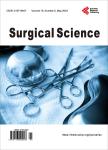Prevalence of Ocular Trauma at the Reference Health Center (CSREF) of Kati
Prevalence of Ocular Trauma at the Reference Health Center (CSREF) of Kati作者机构:University Hospital Center Institute of Tropical Ophthalmology of Africa Bamako Bamako Mali Ophthalmology Department Kati Reference Health Center Koulikoro Mali Ophthalmology Department Sikasso Regional Hospital Sikasso Mali Ophthalmology Department Luxembourg Mother-Child Hospital in Bamako Bamako Mali Ophthalmology Department Sominé Dolo Mopti Regional Hospital in Mopti Mopti Mali National Eye Health Program Bamako Mali
出 版 物:《Surgical Science》 (外科学(英文))
年 卷 期:2024年第15卷第5期
页 面:371-380页
主 题:Eye Trauma Prevalence CSREF Kati
摘 要:Introduction: The authors wanted to study the prevalence of ocular trauma in the ophthalmology unit of the CSREF of Kati. Patients and method: This is a retrospective study, covering the period from January to December 2015, carried out in the ophthalmology unit of the CSREF in Kati. Results: The sample consisted of 568 patients, or 6.82% of ophthalmological consultations. Children aged 0 to 14 years accounted for 154 (27.11%) of the trauma cases. Bruises constitute the main circumstance (58.1%) of eye trauma, followed by domestic accidents (15.6%). Closed globe ocular trauma was the main type of trauma (61.6%), followed by ocular adnexal trauma (30.1%) and open globe trauma (8.3%) in which the penetrating wound was the lesion, the least common (2.6%) but the most serious. Medical treatment was the most used therapeutic modality in 82.4% of cases, followed by surgery with 17.6% of cases. The evolution of the lesions after treatment was favorable in 85.6% of cases and unfavorable in 14.4% of cases. Complications were observed in 5.8% of cases and sequelae in 8.6% of cases. Conclusion: Ocular trauma constitutes an important reason for ophthalmological consultation at the CSREF of Kati. The severity of some of these lesions requires frequent recourse to surgery. The complexity of the treatment should encourage us to favor preventive measures.



